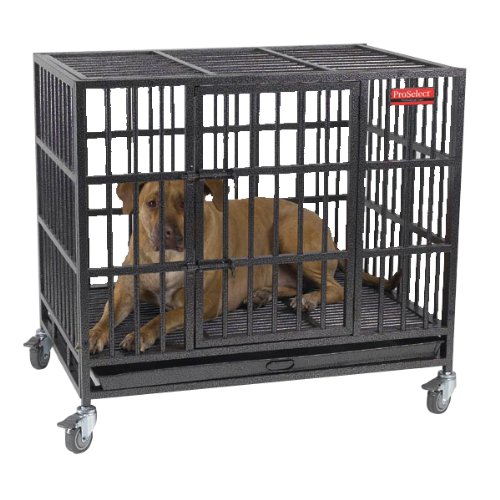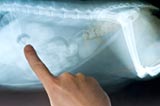
When most people think of toy breed dogs, they probably visualize a Chihuahua, or a Yorkie or perhaps a toy Poodle. However, they may or may not think of Italian Greyhounds, and at an average height of about 15 inches and weighing around 10 pounds, they are one of the largest of the toy breeds.
Curiously enough, at the other end of the spectrum, they are the smallest of another group to which they belong – the sight hounds. While many people refer to them as miniature Greyhounds, they are a true separate breed from their cousins and ancestors, the Greyhounds.
The breed appeared in Italy in the 16th century and rapidly became the darlings of the Italian court's rich and royal élite. In fact, owning one or more Italian Greyhounds symbolized one's wealth and status in that culture. Can you imagine the perceived net worth of Frederick the Great of Prussia, who is reported to have owned over 50 IGs as his personal pets? However, their popularity was not limited to Italy, and Italian Greyhounds began to appear in other areas like Prussia, Austria, Russia and America.
According to the 2011 "AKC Dog Registrations Statistics," Italian Greyhounds number 65th in popularity out of 173 total registered breeds. Why is this toy dog such a popular dog breed? Following are some fascinating facts that offer clues to the answer to that question as well as other interesting information about the breed.
 Credit: christina, under CC-BY-2.0, via Wikimedia Commons, http://commons.wikimedia.org/wiki/File:Italian_Greyhound_standing_gray.jpg
Credit: christina, under CC-BY-2.0, via Wikimedia Commons, http://commons.wikimedia.org/wiki/File:Italian_Greyhound_standing_gray.jpg
As the genetic cousins of Greyhounds, they were specifically bred to achieve their smaller size without losing the other desirable Greyhound traits. Like their swift-footed cousins, Italian Greyhounds are approximately six times faster than the average dog and can attain a maximum speed of about 25 miles per hour.
Because of their incredible speed and highly developed predatory instincts, it is best to keep them on a leash when they are outside. One whiff of the irrestible scent of a rabbit or squirrel could cause them to bolt. f you are looking for a speedy little dog that is loving and affectionate, the Italian Greyhound may be the right choice for you.
Next, let's talk about the breed's appearance and characteristics that make them good pets.
The overall appearance of the Italian Greyhound is one of a finely boned and elegantly proportioned dog with an air of fragility. However, looks are often deceiving, aren’t they?
These tiny Greyhounds are actually hardy dogs that do not suffer from most common dog health problems. Their muscular bodies, high-stepping paws, and keen eyesight make them excellent small game hunters as well as loving companions. IGs belong to a group of dogs called gaze hounds—or sight hounds—because they hunt by sight rather than by scent.
Italian Greyhounds are shorthaired dogs with a smooth, soft coat that feels like the finest satin. The narrow head has a tapered, slender muzzle with either a black or brown nose depending on coat color. The ears are folded at rest—sometimes called propeller ears—but come erect when the dogs are on alert.
This is a deep-chested breed with a slender body and long legs. The tail is long, ending in a curve and carried low. Because their coats come in a wide variety of colors and shadings, it can be difficult to determine an acceptable coat from an unacceptable one. The one constant in coloration is the coat cannot be brindle or have tan markings like a black and tan dog.
These dogs are toy breed dogs susceptible to the following heritable diseases or health problems:
The best way to avoid such problems is by buying from reputable breeders and checking the health records of a puppy's parents before making a purchase.
IGs are indoor dogs and may need the protection of a coat or sweater in cold weather or a raincoat in rainy weather as they dislike getting wet or cold. Another dislike of Iggies is a daily tooth brushing; however, this task is crucial to help them overcome the breeds’ predisposition to dental problems.
They can be difficult to house train, and it is usually a lengthy process. Because of their dislike of cold, wet weather, some owners prefer to train them to use a litter box. Their willingness to use a litter box is just one of many feline-type characteristics of this breed.
They love napping in the sun and lounging on the backs of chairs and sofas. Since they are such agile climber and jumpers, take care with puppies younger than 18 months of age to prevent falls that could break a fragile bone.
Italian Greyhounds can be demanding. On Animal Planets Dogs 101, they are described as "velcro dogs" because of their clingy ways and desire to be on your lap constantly. They will show undesirable behaviors such as barking, digging or chewing if they do not receive lots of attention. Furthermore, they may suffer from separation anxiety if left alone for long periods of time. Daily walks and opportunities to run are recommended.
If you can devote the time and patience to housebreaking, training and socializing Italian Greyhounds, you will be rewarded with a devoted lifelong companion. However, if this dog sounds too time consuming for your lifestyle, you should probably choose a different toy breed dog.
[3550]
[3551]
[3552]
 Pro Select Empire Cages
Crate training a dog is a go
Pro Select Empire Cages
Crate training a dog is a go
 Why Vet Care is So Expensive
Why Vet Care is So Expensive
Why Vet Care is So Expensive
Why Vet Care is So Expensive
 How to Brush Dogs Teeth Without Losing Your Fingers!
After a horrible dental expe
How to Brush Dogs Teeth Without Losing Your Fingers!
After a horrible dental expe
 Designer Dog: Jorkie
What is a Jorkie?A Jorkie is
Designer Dog: Jorkie
What is a Jorkie?A Jorkie is
 Top Seven Dog Treats - A list of the best, most healthy dog treats available
Top Seven Dog Treats
It抯 easy to go to your local pet super
Top Seven Dog Treats - A list of the best, most healthy dog treats available
Top Seven Dog Treats
It抯 easy to go to your local pet super
Copyright © 2005-2016 Pet Information All Rights Reserved
Contact us: www162date@outlook.com